Exciting Pottery Trends to Look Forward To
In the world of pottery, each year brings a fresh wave of creativity and innovation that captivates both artists and enthusiasts alike. As we step into a new era of ceramics, it’s thrilling to explore the latest trends that are shaping this timeless craft. Pottery is no longer just about functional items; it has evolved into a vibrant form of artistic expression that reflects our changing values and aesthetics. So, what can we expect in the coming months? Buckle up as we dive into the exciting developments that are redefining pottery, from eco-friendly materials to stunning designs that blend functionality with artistry.
Sustainability is a key trend in pottery, with artists increasingly using eco-friendly materials. This shift is not just a passing fad; it reflects a growing awareness of our environmental responsibilities. Potters are now experimenting with biodegradable clays and recycled glazes that minimize waste and reduce their carbon footprint. These materials are not only good for the planet but also offer unique textures and colors that can’t be replicated with traditional options. Imagine a beautiful vase made from recycled materials that tells a story of sustainability while enhancing your home décor!
Minimalism continues to influence pottery, focusing on simplicity and functionality. In a world that often feels cluttered, minimalist pottery offers a breath of fresh air. The aesthetic appeal of clean lines and understated forms resonates with modern sensibilities, making these pieces perfect for contemporary homes. Think about a sleek, monochrome bowl that serves as both a functional item and a striking centerpiece. The beauty of minimalist design lies in its ability to convey elegance without overwhelming the senses.
Textured pottery adds depth and interest to pieces, transforming ordinary ceramics into extraordinary works of art. Artists are employing various techniques to create unique surface textures that enhance visual appeal and tactile experience. From rough, sandy finishes to smooth, glossy surfaces, the choice of texture can completely change the perception of a piece. Techniques like carving and stamping are gaining traction, allowing potters to add intricate designs that invite touch and admiration.
Carving is a popular method for adding intricate designs to pottery. Potters are using carving tools to etch stunning patterns into their work, creating visual effects that are both mesmerizing and personal. This technique allows for a high degree of customization, making each piece truly unique. Imagine holding a mug that not only feels good in your hands but also boasts a beautifully carved design that reflects your personality!
Stamping and imprinting techniques are becoming more prevalent in pottery. These methods introduce patterns and designs that elevate the overall aesthetic of ceramic pieces. Artists are using everything from natural materials like leaves and flowers to custom-made stamps that showcase their individual style. The result is a collection of pottery that tells a story, with each stamp adding a layer of depth and character.
Innovative glazing techniques are transforming the color palette of pottery. Artists are experimenting with layering and reactive glazes that create vibrant effects, adding a splash of color to their creations. Imagine a bowl that shifts from deep blue to bright green depending on the angle of light—these are the kinds of magical transformations that modern glazing techniques can achieve. The interplay of colors not only enhances the visual appeal but also invites viewers to engage with the piece on a deeper level.
Pottery is increasingly being recognized as functional art. Artists are merging beauty with utility, creating pieces that serve practical purposes without sacrificing style. This trend is particularly evident in the realm of kitchenware, where form meets function in delightful ways. From beautifully crafted serving dishes to elegant dinnerware, functional pottery is not just about use; it’s about elevating everyday experiences.
Kitchenware pottery is evolving, with trends emphasizing both functionality and design. The latest styles in dinnerware and serving dishes are not only visually appealing but also practical for daily use. Imagine hosting a dinner party with stunning plates that are as durable as they are beautiful—this is the future of kitchenware pottery! The emphasis on artisan craftsmanship means that each piece is a work of art, ready to impress your guests.
Home décor pottery is gaining traction, with unique pieces that enhance interior spaces. From eye-catching vases to stylish planters, decorative pottery items are becoming essential elements of home aesthetics. These pieces are not just for decoration; they bring life and personality to any room. A handcrafted vase filled with fresh flowers can transform a dull corner into a vibrant focal point, showcasing the beauty of both nature and craftsmanship.
Collaboration within the pottery community is on the rise, fostering creativity and innovation. Potters are working together to share techniques and inspire each other’s work, creating a supportive environment that encourages experimentation. This sense of community not only helps artists grow but also leads to the emergence of exciting new styles and trends. Imagine a workshop where potters from different backgrounds come together to create something truly unique—this is the power of collaboration in the pottery world.
- What are some popular eco-friendly materials used in pottery? Biodegradable clays and recycled glazes are among the most popular eco-friendly materials.
- How can I incorporate minimalist pottery into my home? Look for pieces with clean lines and simple forms that can serve as functional items or decorative accents.
- What is the significance of textured surfaces in pottery? Textured surfaces add depth and interest, enhancing both visual appeal and tactile experience.
- How do collaborative efforts benefit potters? Collaboration fosters creativity, allowing artists to share techniques and inspire each other, leading to innovative works.

Eco-Friendly Materials
In today's world, where environmental consciousness is more critical than ever, the pottery community is stepping up to the plate with a focus on . Artists and artisans are increasingly turning to biodegradable clays and recycled glazes, which not only reduce waste but also promote sustainability in their craft. Imagine a world where your beautiful ceramic mug is not just a vessel for your morning coffee but also a testament to your commitment to the planet. This shift towards greener practices is not just a trend; it's a movement that resonates deeply with both creators and consumers.
Biodegradable clays are made from natural materials that break down over time, minimizing their environmental impact. These clays often come from local sources, which reduces transportation emissions and supports local economies. Potters can create stunning pieces while knowing they are using materials that won’t contribute to landfill waste. For instance, some artists are experimenting with clay bodies that incorporate organic materials like paper pulp or plant fibers, adding unique textures and characteristics to their work.
On the other hand, recycled glazes are becoming a game-changer in the pottery world. These glazes are made from post-consumer waste, such as glass and ceramics, which are crushed and reformed into new glazing materials. This not only reduces the demand for new raw materials but also gives a second life to items that might otherwise end up in the trash. The result? A stunning array of colors and finishes that are as vibrant as they are responsible. Artists are finding innovative ways to layer these glazes, creating dynamic visual effects that captivate the eye.
Moreover, the integration of eco-friendly materials in pottery is fostering a sense of community among artists. Potters are sharing their techniques and discoveries, creating a collaborative environment where sustainability is at the forefront. Workshops and online forums are buzzing with discussions about the best practices for using these materials, encouraging others to join the movement. It’s not just about making beautiful art; it’s about making art that matters.
To illustrate the impact of these materials, consider the following table that highlights some popular eco-friendly options:
| Material | Description | Environmental Benefit |
|---|---|---|
| Biodegradable Clay | Natural clays that break down over time | Reduces landfill waste |
| Recycled Glaze | Glazes made from post-consumer waste | Minimizes demand for new raw materials |
| Local Sourcing | Using materials sourced from nearby areas | Reduces transportation emissions |
In conclusion, the rise of eco-friendly materials in pottery is more than just a trend; it's a reflection of a broader commitment to sustainability and creativity in the arts. As potters continue to innovate and explore new ways to incorporate these materials, we can expect to see even more exciting developments in the future. So next time you admire a beautifully crafted ceramic piece, remember the journey it took to become an eco-conscious work of art.

Minimalist Designs
In the world of pottery, minimalism has emerged as a powerful trend that champions the beauty of simplicity. This design philosophy strips away the unnecessary, allowing the essence of the material and form to shine through. Imagine walking into a room adorned with pottery that speaks volumes without uttering a single word. That's the magic of minimalist designs! They resonate with our modern sensibilities, creating a serene atmosphere that invites calm and reflection.
The appeal of minimalist pottery lies in its clean lines and understated forms. Potters are increasingly focusing on creating pieces that are not only functional but also aesthetically pleasing. This approach encourages a deeper appreciation for craftsmanship, as every curve and angle is thoughtfully considered. The beauty of a minimalist vase, for instance, is not just in its shape but in how it interacts with light and shadow, creating a dynamic presence in any space.
Moreover, minimalist designs often utilize a limited color palette, which enhances their elegant simplicity. Neutral tones, such as whites, grays, and earth tones, dominate the scene, allowing the texture and shape of the pottery to take center stage. This trend aligns perfectly with contemporary interior design, where the mantra is often 'less is more'. By incorporating minimalist pottery into your home, you not only elevate your décor but also embrace a lifestyle that values clarity and intention.
But how do potters achieve this minimalist aesthetic? Here are some techniques that are commonly employed:
- Geometric Shapes: Many artists are experimenting with geometric forms, creating pieces that are both striking and simple.
- Natural Finishes: Leaving surfaces unglazed or using matte glazes can enhance the raw beauty of the clay.
- Functional Forms: Designs that serve a purpose, like a sleek pitcher or a simple bowl, emphasize the idea that utility can also be art.
Ultimately, minimalist pottery invites us to slow down and appreciate the craftsmanship behind each piece. It challenges us to consider how we interact with our surroundings and encourages a more mindful approach to decorating our spaces. So, the next time you find yourself in a pottery shop, take a moment to admire the beauty of simplicity—it might just inspire you to bring a touch of minimalism into your home!
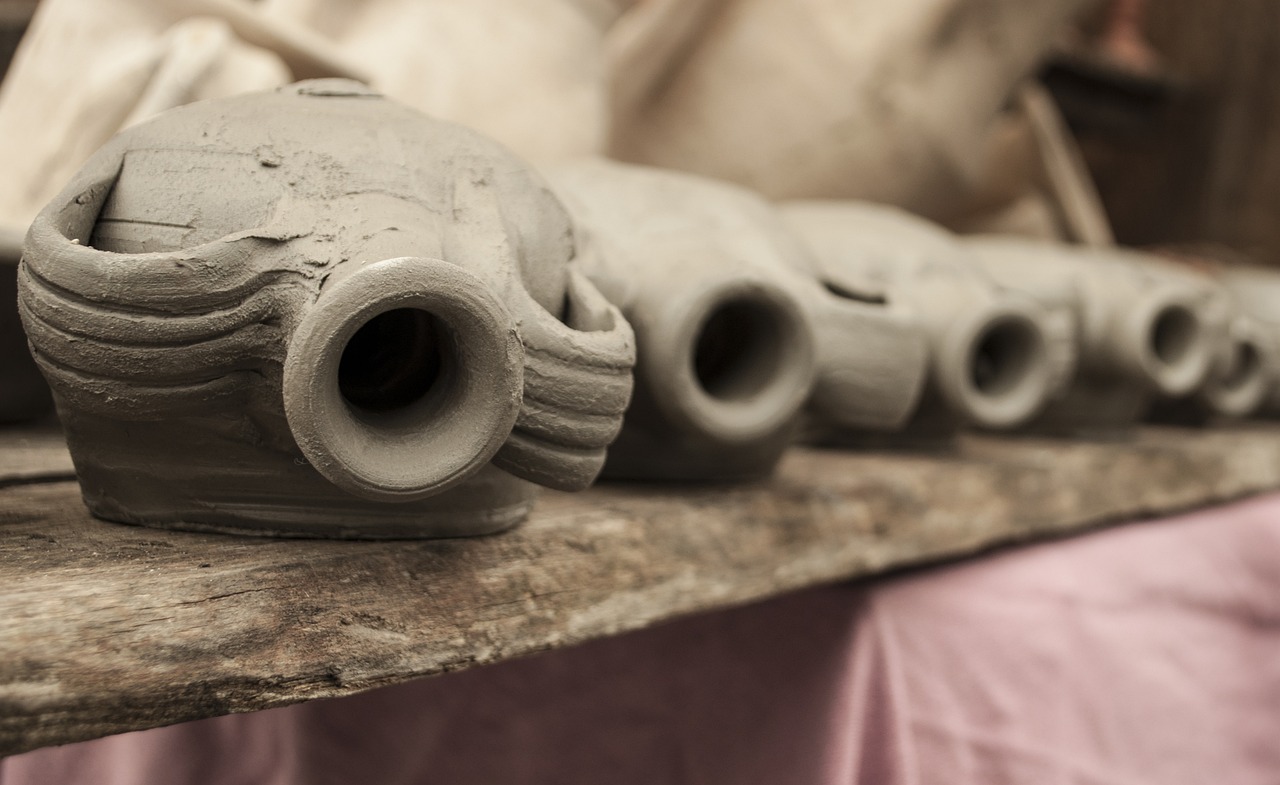
Textured Surfaces
When it comes to pottery, are stealing the spotlight, and for good reason! Imagine running your fingers over a beautifully crafted piece of pottery, feeling the intricate patterns and designs that have been meticulously created. Textured pottery not only enhances the visual appeal but also adds a tactile dimension that makes each piece unique. Artists are experimenting with various techniques to achieve these stunning surfaces, and the results are nothing short of breathtaking.
One of the most popular methods for achieving texture in pottery is through handbuilding. This technique allows artists to manipulate the clay directly, creating raised patterns or indentations that catch the light beautifully. Additionally, potters are increasingly using slip trailing, where a liquid clay mixture is applied onto the surface to create raised designs. This method opens up a world of possibilities, allowing for intricate details that can transform a simple bowl into a work of art.
Another fascinating approach is using stamps and molds. Potters are incorporating found objects, like leaves or fabric, to create unique imprints on their pieces. This not only adds texture but also tells a story, as each imprint is a reflection of the artist's environment and inspiration. The beauty of textured pottery lies in its ability to engage the senses—visually, it draws the eye, and tactilely, it invites touch.
Moreover, textured surfaces can be enhanced through glazing techniques. Glaze layering is a trend that is gaining traction, where multiple layers of glaze are applied to create depth and variation in color. This technique can accentuate the textures, making them pop in ways that are simply mesmerizing. Imagine a piece where the light dances across the undulating surface, revealing hidden colors and patterns that change with every angle.
In conclusion, textured surfaces in pottery are not just a trend; they are a way for artists to express their creativity and individuality. As potters continue to explore new techniques and materials, we can only expect to see even more innovative and exciting designs in the future. So, whether you're a pottery enthusiast or a casual admirer, keep an eye out for these textured masterpieces that are sure to captivate your senses!
- What are some common techniques used to create textured surfaces in pottery?
Common techniques include handbuilding, slip trailing, using stamps and molds, and glazing layering. Each method offers unique ways to add depth and interest to pottery pieces.
- Why are textured surfaces popular in pottery?
Textured surfaces add visual and tactile appeal, making each piece unique and engaging. They invite interaction and can transform ordinary pottery into stunning works of art.
- Can I create textured pottery at home?
Absolutely! With some basic tools and techniques, anyone can create textured pottery. Experimenting with different materials and methods can lead to beautiful results!

Carving Techniques
Carving techniques in pottery are like the brushstrokes of a painter; they add a personal touch and depth to each piece, transforming a simple form into an intricate work of art. As potters delve into the world of carving, they discover a plethora of methods that allow them to express their creativity in unique ways. From traditional to contemporary styles, carving can elevate pottery from mere utility to a stunning centerpiece that tells a story.
One of the most popular carving techniques is incising, where potters use sharp tools to create designs directly on the surface of the clay. This method not only adds visual interest but also creates a tactile experience, inviting touch and interaction. Imagine running your fingers over delicate patterns that are etched into the surface, each groove telling a tale of the artist's journey.
Another fascinating technique is relief carving, where designs are raised above the surface of the pottery. This method can create stunning 3D effects, making the piece come alive. Artists often use this technique to depict natural scenes, abstract designs, or even intricate motifs that reflect their cultural heritage. The contrast between the raised areas and the smooth background enhances the overall aesthetic, making each piece a conversation starter.
For those looking to add even more complexity, carving in layers allows potters to build up their designs, creating depth and shadow. This technique involves carving through multiple layers of clay, revealing different colors or textures beneath the surface. The result is a dynamic piece that changes with the light, captivating viewers from every angle. Potters often experiment with this technique to push the boundaries of traditional pottery, resulting in innovative designs that are both striking and original.
To illustrate the various carving techniques, here’s a simple table that summarizes some popular methods:
| Carving Technique | Description | Visual Effect |
|---|---|---|
| Incising | Creating designs by cutting into the surface. | Flat patterns with texture. |
| Relief Carving | Raising designs above the clay surface. | 3D effects that invite touch. |
| Layered Carving | Carving through layers for depth. | Dynamic visuals that change with light. |
In addition to these techniques, potters are also experimenting with tools that were once reserved for woodworking or metalworking. This cross-disciplinary approach not only enhances the precision of their work but also opens up new possibilities for creativity. With the right tools, a potter can achieve intricate designs that were previously thought to be unattainable.
Ultimately, carving techniques in pottery are not just about aesthetics; they are a means of expression, a way for artists to connect with their audience. Each carved line and shape carries the essence of the creator's vision, making every piece a unique narrative. So, the next time you admire a beautifully carved pottery piece, take a moment to appreciate the skill and passion that went into its creation. It’s more than just clay; it’s a story waiting to be told.
- What tools are commonly used for carving pottery? Potters often use tools such as loop tools, knives, and dental tools to achieve various carving effects.
- Can carving be done on all types of clay? Yes, but softer clays are generally easier to carve, especially when they are at the leather-hard stage.
- How can I learn carving techniques? Many pottery classes and online tutorials offer guidance on carving techniques, along with hands-on practice.
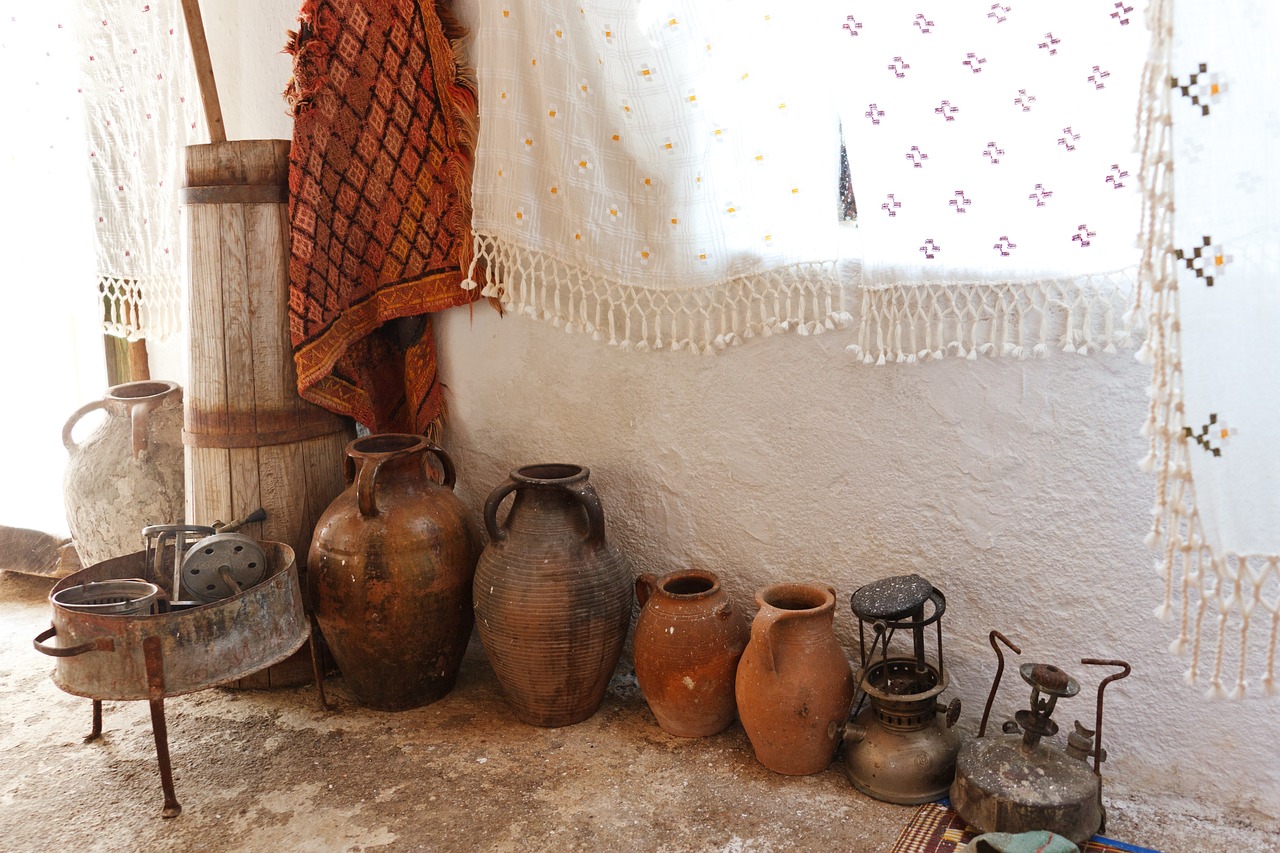
Stamping and Imprinting
Stamping and imprinting techniques are making waves in the world of pottery, adding a delightful twist to traditional methods. These techniques allow artists to embed unique patterns and designs directly into the clay, creating pieces that are not just functional but also tell a story. Imagine holding a mug that has a delicate floral pattern pressed into its surface, or a bowl adorned with intricate geometric shapes. Each piece becomes a canvas for creativity, showcasing the potter's artistic flair.
One of the most exciting aspects of stamping is the variety of materials and tools that can be used. Potters are experimenting with everyday items like leaves, fabric, and even found objects to create unique textures. For instance, a simple leaf can be pressed into soft clay to leave behind an organic imprint, resulting in a stunningly natural design. This not only adds a personal touch but also connects the piece to nature, making it even more special.
Moreover, the process of stamping can be incredibly therapeutic. As potters press their chosen objects into the clay, they often find a rhythm that is both calming and meditative. It's a dance between the artist and the medium, where each impression made is a step toward creating something beautiful. This process emphasizes the idea that pottery is not just about the final product but also about the journey of creation.
In addition to stamping, imprinting techniques can also involve the use of custom-made stamps that feature intricate designs. These stamps can be crafted from various materials, including rubber, wood, or even metal, allowing for endless possibilities in terms of patterns. Potters can create a series of matching pieces that share a common theme, such as a collection of dinnerware that features the same stamped design, creating a cohesive look for any dining experience.
As we look to the future of pottery, it’s clear that stamping and imprinting are here to stay. They offer a way for potters to express their individuality while also embracing the beauty of craftsmanship. Whether you’re a seasoned potter or just starting out, experimenting with these techniques can lead to stunning results. So, why not grab some clay and let your imagination run wild? You might just create the next masterpiece that will leave everyone in awe!
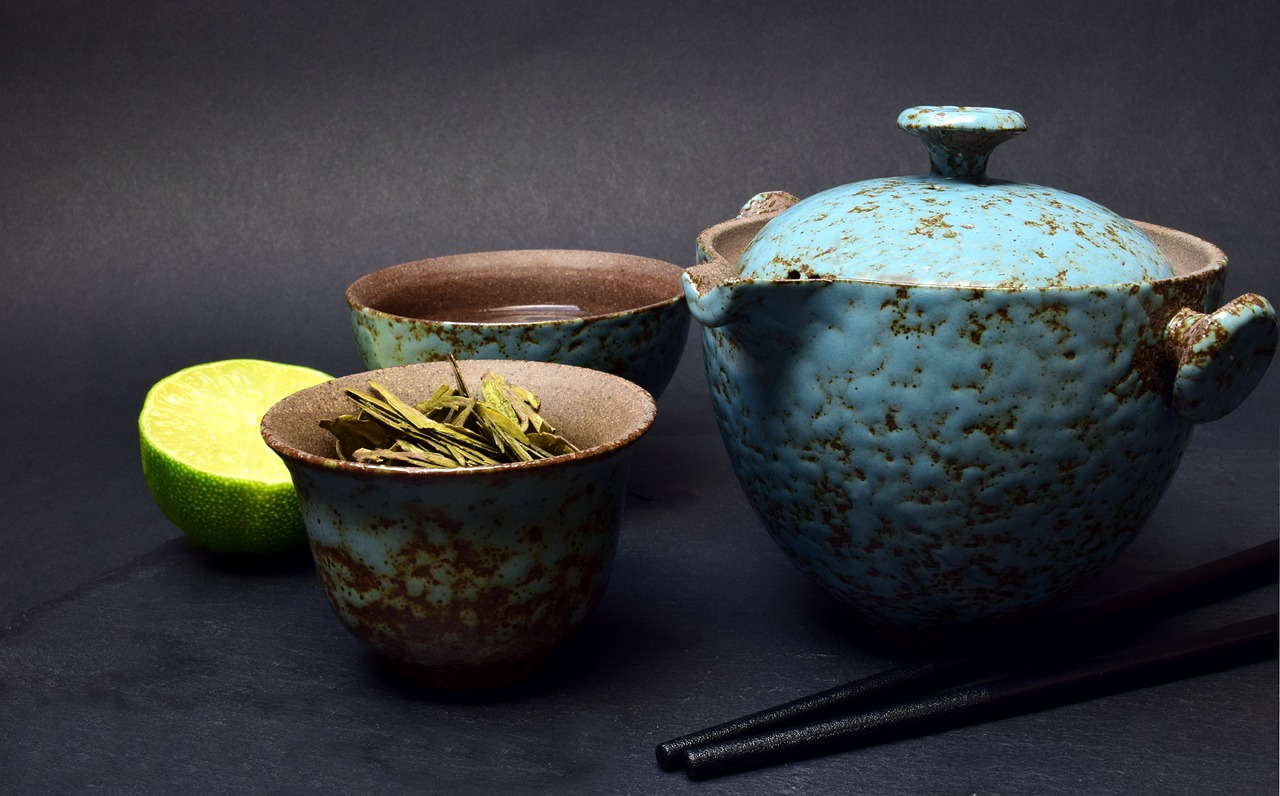
Colorful Glazing Techniques
The world of pottery has always been a canvas for creativity, but the latest are truly taking things to another level. Imagine walking into a gallery filled with vibrant hues, each piece telling a story through its unique colors and textures. Potters today are not just applying glazes; they are experimenting with innovative methods that transform their work into stunning visual masterpieces. One of the most exciting trends is the use of layering glazes, where multiple colors are applied in succession to create depth and complexity. This technique allows for a play of colors that can shift and change depending on the light, making each piece a dynamic work of art.
Another captivating method gaining traction is the use of reactive glazes. These glazes contain materials that interact with one another during the firing process, resulting in unpredictable and beautiful outcomes. Each firing can yield different results, making every piece unique. Imagine a bowl where the blue glaze merges with a green base, creating a stunning gradient reminiscent of ocean waves. Such effects not only enhance the visual appeal but also make each item a one-of-a-kind treasure.
In addition to layering and reactive techniques, potters are also exploring matte versus glossy finishes. While glossy glazes have long been favored for their shiny, reflective qualities, matte finishes are making a comeback. These matte glazes offer a soft, understated elegance that can complement both modern and rustic aesthetics. The tactile experience of a matte surface invites touch, encouraging a deeper connection between the piece and the viewer.
Moreover, the use of natural pigments is becoming increasingly popular. Potters are turning to earth-based colors, such as ochres and iron oxides, to create rich, organic tones that resonate with nature. This trend not only enhances the beauty of the pottery but also aligns with the growing demand for eco-friendly practices in the arts. The result is a collection of pieces that feel grounded and authentic, celebrating the raw beauty of the materials.
As we look to the future, it’s clear that the evolution of glazing techniques is not just about aesthetics; it's about pushing boundaries and exploring new possibilities. Potters are collaborating and sharing their discoveries, leading to a vibrant community that thrives on innovation. Whether you’re an artist or a pottery enthusiast, the colorful glazing techniques emerging today are sure to inspire and ignite your passion for this timeless craft.
- What are reactive glazes? Reactive glazes are special glazes that change color and texture during the firing process due to the interaction of different materials.
- How can I achieve a layered glazing effect? Layering glazes involves applying multiple layers of different colored glazes on a single piece, allowing each layer to show through.
- What is the difference between matte and glossy glazes? Matte glazes have a soft, non-reflective finish, while glossy glazes are shiny and reflective, enhancing colors and patterns.
- Are natural pigments safe to use in pottery? Yes, natural pigments are generally safe and non-toxic, making them an excellent choice for eco-conscious potters.

Functional Art
In today's world, where aesthetics and utility often seem at odds, pottery is breaking barriers by emerging as a form of . Imagine a beautifully crafted bowl that not only serves as an eye-catching centerpiece but is also perfect for serving your favorite dish. This blend of beauty and practicality is what makes contemporary pottery so exciting. Artists are increasingly recognizing that their creations should do more than just look good; they should also serve a purpose in our daily lives.
As we delve deeper into this trend, we see that potters are reimagining everyday items, transforming them into stunning works of art. From intricately designed dinnerware to uniquely shaped serving platters, the possibilities are endless. The focus is not just on making items that are visually appealing; it's about creating pieces that enhance the overall experience of using them. For instance, a mug that feels perfectly balanced in your hand can elevate your morning coffee ritual into a moment of joy.
Moreover, the concept of functional art extends beyond mere aesthetics. It encompasses the idea of sustainability and eco-friendliness, where artists are using natural materials and techniques that respect the environment. This not only adds value to the piece but also connects the user to the story behind it. When you choose a handmade pottery item, you’re not just buying a product; you’re investing in a piece of art that has a narrative, a history, and an intention.
Here are some exciting examples of how pottery is being transformed into functional art:
- Kitchenware: Think of beautifully crafted plates that are as much a feast for the eyes as they are for the palate. Potters are experimenting with shapes and glazes that make each piece unique.
- Home Décor: Vases and planters that serve as stunning focal points in any room, while also providing a home for your favorite plants.
- Serving Dishes: Large platters designed not just for serving food but also for serving as conversation starters during gatherings.
In summary, the trend of functional art in pottery is about embracing the duality of beauty and utility. It invites us to rethink how we interact with everyday objects, encouraging us to appreciate the artistry that goes into each piece. The next time you find yourself admiring a handmade pottery item, remember that it’s more than just a decorative object; it’s a celebration of creativity, craftsmanship, and the joy of functionality.
Q: What is functional art in pottery?
A: Functional art in pottery refers to pieces that are designed to be used in everyday life while also serving as beautiful works of art. This includes items like dinnerware, serving platters, and decorative vases that enhance both aesthetic and practical experiences.
Q: How do potters ensure their pieces are both beautiful and functional?
A: Potters achieve this balance by carefully considering the design, usability, and material choices. They often experiment with different shapes, sizes, and glazes to create items that are not only visually appealing but also practical for everyday use.
Q: Are handmade pottery items sustainable?
A: Many potters are committed to sustainability, using eco-friendly materials and techniques that minimize environmental impact. This trend is becoming increasingly popular as consumers seek out products that are both beautiful and responsible.
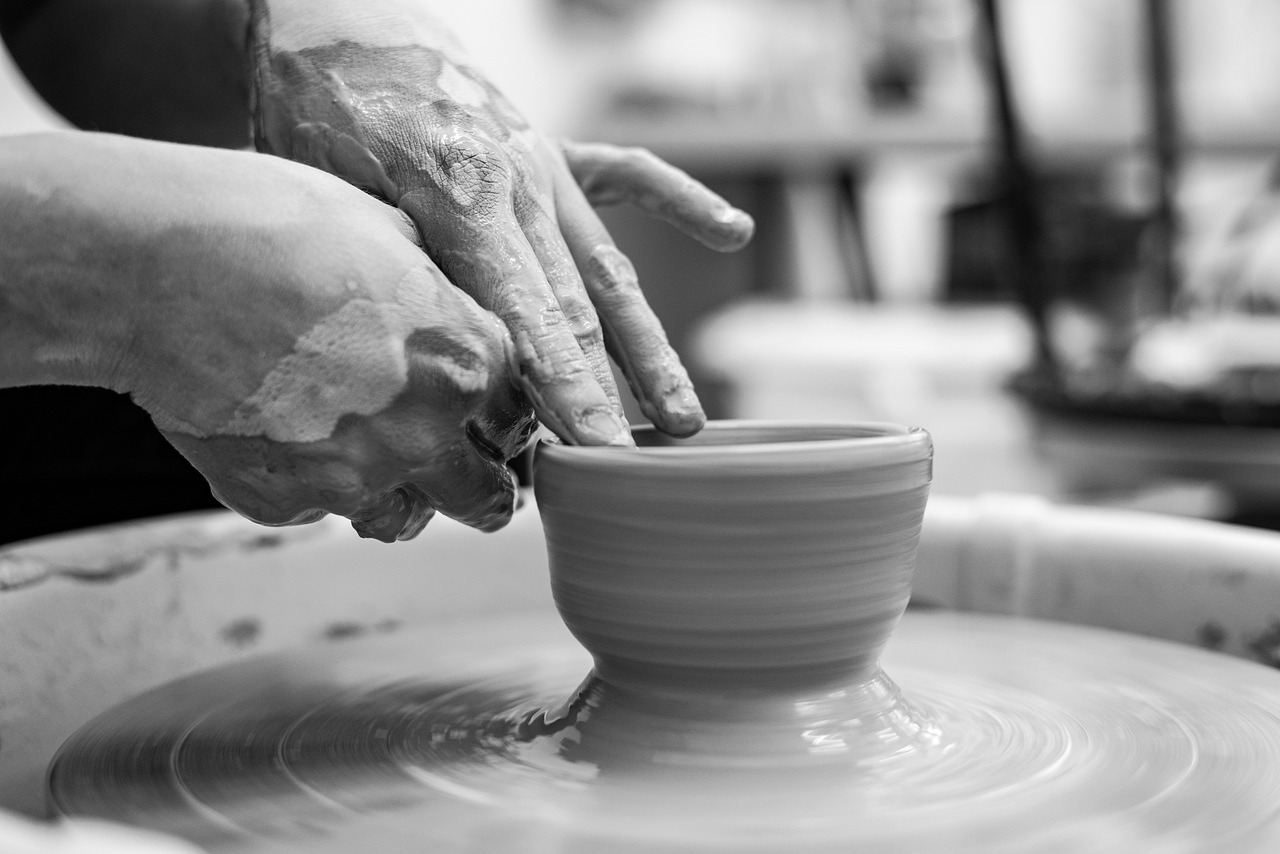
Kitchenware Trends
The world of pottery is not just about aesthetics; it’s about bringing beauty into our daily lives, especially in the kitchen. As we step into a new era of culinary creativity, are evolving to reflect a balance between functionality and artistic expression. Imagine serving your guests a delightful meal on a plate that isn’t just a plate, but a piece of art! This fusion of form and function is what potters are embracing today.
One of the most exciting trends in kitchenware pottery is the rise of handcrafted dinnerware. Unlike mass-produced items, handcrafted pieces offer a unique touch that can’t be replicated. Each dish, bowl, and mug tells a story, showcasing the potter's skills and the character of the material. Potters are experimenting with various shapes and sizes, creating collections that are not only practical but also visually stunning. For instance, you might find asymmetrical bowls that add a whimsical touch to your table setting, making every meal feel like a special occasion.
In addition to unique shapes, color plays a significant role in current kitchenware trends. Potters are moving away from traditional whites and earth tones, embracing vibrant hues and bold patterns. Reactive glazes are particularly popular, as they create dynamic color variations that change with each firing. This unpredictability adds an element of surprise to every piece, making your kitchenware not just functional, but a conversation starter. Imagine serving a salad in a bowl that shifts from deep blue to a rich green, captivating your guests with its beauty.
Another trend that’s gaining traction is the incorporation of multi-functional items. As kitchens become smaller and more efficient, potters are designing pieces that serve multiple purposes. For example, a beautifully crafted serving dish can double as a decorative centerpiece when not in use. This trend not only saves space but also encourages creativity in how we use our kitchenware. Potters are also focusing on practicality; items are being designed with easy stacking and storage in mind, making them perfect for modern living.
Furthermore, sustainability is a key consideration in the production of kitchenware pottery. Many artisans are now using eco-friendly materials, such as locally sourced clay and natural glazes, to reduce their environmental impact. This conscious effort resonates with consumers who are increasingly looking for products that are not only beautiful but also kind to the planet. By choosing sustainable kitchenware, you’re not just enhancing your home; you’re also making a positive statement about your values.
As we look ahead, it’s clear that the trends in kitchenware pottery are set to inspire both chefs and home cooks alike. The blend of artistry, functionality, and sustainability creates a rich tapestry of options for anyone looking to elevate their culinary experience. Whether you’re hosting a dinner party or enjoying a quiet meal at home, the right pottery can transform your dining experience into something truly memorable.
- What materials are commonly used in kitchenware pottery? Most kitchenware pottery is made from stoneware, earthenware, or porcelain, each offering different benefits in terms of durability and aesthetics.
- How can I care for my pottery kitchenware? It’s best to hand wash your pottery with mild soap and avoid harsh chemicals. Always check if your pieces are dishwasher or microwave safe.
- Are handmade pottery items safe for food use? Yes, as long as they are made with food-safe glazes and materials. Always look for labels or certifications from the potter.
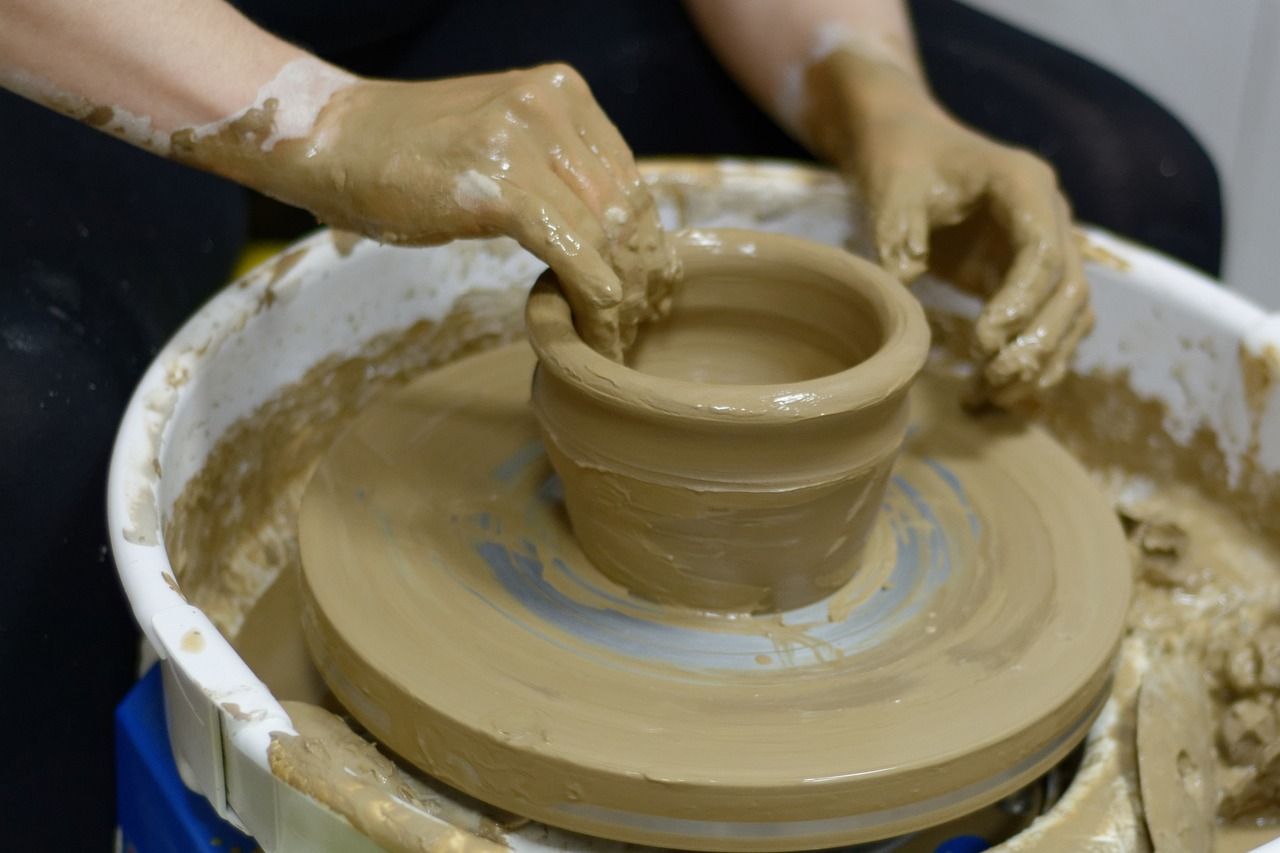
Home Décor Items
In the ever-evolving world of pottery, home décor items are taking center stage, capturing the hearts of design enthusiasts and casual decorators alike. The beauty of pottery lies not only in its functionality but also in its ability to transform spaces. Imagine walking into a room adorned with unique, handcrafted pieces that tell a story of artistry and creativity. This is where pottery shines, offering a blend of aesthetic appeal and personal touch that mass-produced items simply can't match.
As we delve into the latest trends in home décor pottery, it's essential to recognize the diversity of styles available. From rustic charm to modern elegance, the spectrum is vast. Potters today are experimenting with shapes, sizes, and finishes, resulting in an array of stunning pieces that can serve as focal points or subtle accents in any room. Whether it's a large, eye-catching vase or a delicate planter, each piece contributes to the overall ambiance of the space.
One of the most exciting trends is the use of bold colors and intricate patterns. Potters are embracing vibrant hues that can instantly lift the mood of a room. For instance, you might find a beautifully glazed ceramic bowl in deep teal or a striking orange planter that adds a pop of color to your indoor garden. These pieces not only serve their practical purposes but also act as conversation starters, inviting guests to admire and inquire about their origins.
Moreover, the trend of incorporating natural elements into home décor pottery is gaining momentum. Many artists are inspired by nature, leading to pieces that mimic organic forms and textures. Think of a vase that resembles a tree trunk or a planter that echoes the contours of a mountain. These designs not only enhance the visual appeal but also create a sense of calm and connection to the natural world.
In addition to aesthetics, functionality remains a key consideration in home décor pottery. Many potters are crafting items that are both beautiful and practical. For example, decorative bowls can double as fruit holders, while artistic vases can also serve as storage solutions. This fusion of form and function is particularly appealing to those who appreciate a clutter-free living space without compromising on style.
As we explore the impact of pottery on home décor, it's crucial to mention the growing trend of personalized and custom pieces. Many potters are offering bespoke services, allowing customers to commission items that reflect their unique tastes and preferences. This trend not only supports local artisans but also results in one-of-a-kind pieces that can be cherished for years to come.
In summary, home décor pottery is more than just decorative items; it is a celebration of creativity, individuality, and sustainability. With a focus on unique designs, bold colors, and functional art, pottery continues to redefine interior spaces. As you consider enhancing your home, remember that every piece of pottery has the potential to tell a story, evoke emotions, and inspire creativity.
- What types of pottery are best for home décor? Pottery that features unique designs, vibrant colors, and functional elements is ideal for home décor. Look for vases, planters, and decorative bowls that resonate with your personal style.
- How can I incorporate pottery into my home? You can use pottery as centerpieces on tables, accent pieces on shelves, or functional items in your kitchen. Mixing different styles and colors can create an eclectic look.
- Are handmade pottery items more expensive? While handmade pottery can be more expensive than mass-produced items, the quality, uniqueness, and craftsmanship often justify the price. Plus, you're supporting local artisans!
- How do I care for my pottery items? Most pottery items can be cleaned with mild soap and water. Avoid harsh chemicals and always check if the piece is dishwasher-safe before cleaning.
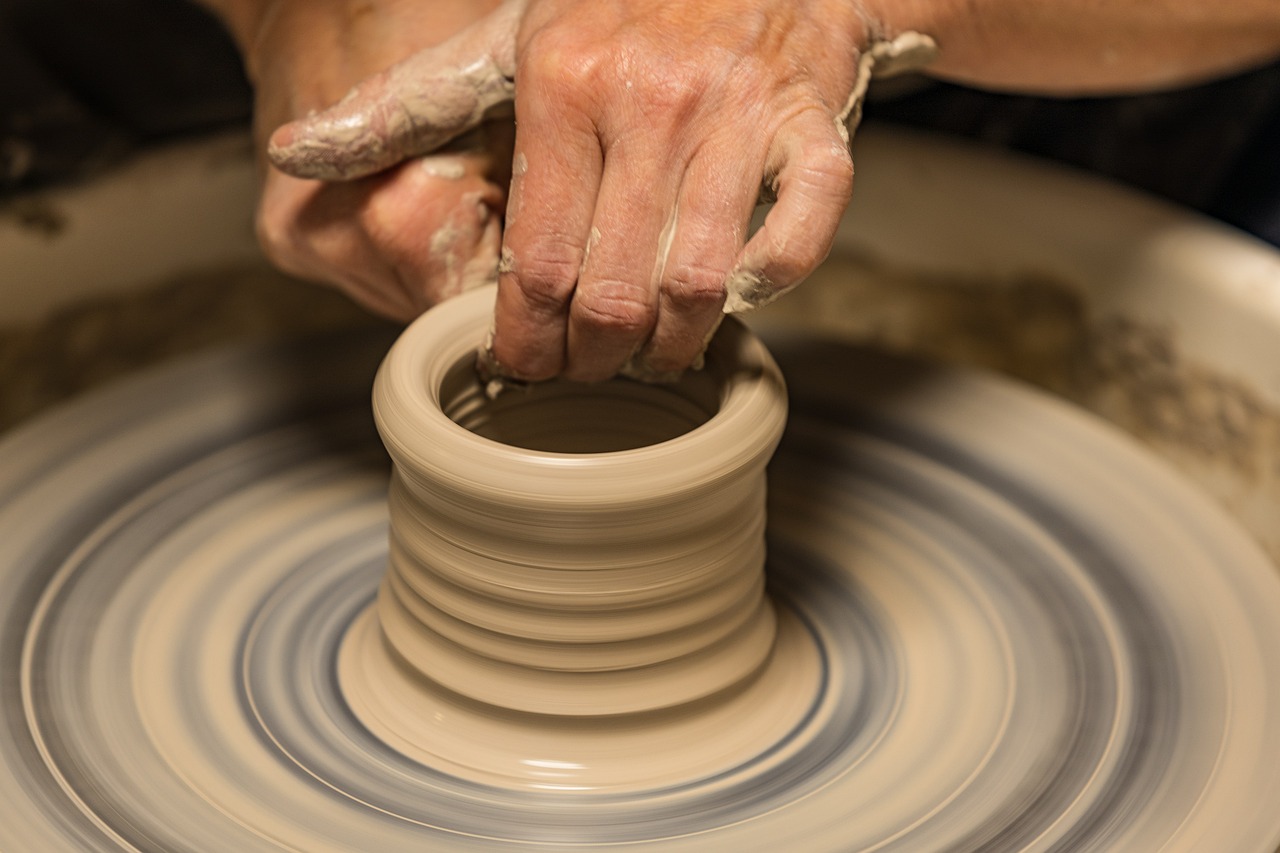
Community and Collaboration
In the vibrant world of pottery, the spirit of community and collaboration is more alive than ever. Potters are increasingly recognizing that sharing knowledge, techniques, and experiences can lead to remarkable growth and innovation in their craft. Imagine a group of artists coming together, each bringing their unique skills to the table—it's like a potluck dinner, but instead of food, they’re serving up creativity and inspiration!
One of the most exciting developments in the pottery scene is the rise of collaborative workshops. These gatherings not only foster a sense of camaraderie among potters but also allow them to experiment with new methods and styles. Participants can learn from each other, share tips on glazing techniques, or even work on joint projects that combine their individual aesthetics. This synergy often results in stunning pieces that reflect a blend of different influences and ideas.
Moreover, social media platforms have become a vital tool for potters to connect and collaborate. Artists can showcase their work, share tutorials, and offer insights into their creative processes. For instance, Instagram has become a treasure trove of pottery inspiration, where hashtags like #PotteryCommunity and #CeramicsCollab bring together potters from all corners of the globe. Through these platforms, artists can form connections that transcend geographical boundaries, leading to exciting collaborations that might not have been possible otherwise.
Additionally, many pottery studios are now embracing the idea of open studio days, where artists invite the public to observe and participate in the creative process. This not only demystifies pottery-making but also encourages community engagement. Visitors can try their hand at the wheel, ask questions, and even take home a piece they’ve crafted themselves. Such initiatives help to build a supportive community around pottery, where both seasoned artists and newcomers can thrive.
To illustrate the impact of collaboration in pottery, consider the following table showcasing some successful collaborative projects:
| Project Name | Artists Involved | Description |
|---|---|---|
| Clay Collective | Jane Doe, John Smith | A series of functional dinnerware that combines minimalist design with vibrant glazes. |
| Texture Talks | Mary Johnson, Alex Lee | Explores various surface textures through a collaborative exhibition. |
| Community Kiln | Multiple Local Artists | A shared kiln space where artists can experiment with firing techniques. |
As we look to the future of pottery, it’s clear that the emphasis on community and collaboration will only continue to grow. Potters are discovering that by working together, they can push the boundaries of their craft, inspire one another, and create pieces that resonate on a deeper level. So, whether you’re a seasoned potter or just starting out, consider reaching out to fellow artists. You might just find that the best creations come from a shared vision and collective effort!
- What are the benefits of collaborating with other potters? Collaborating allows artists to share techniques, gain new perspectives, and create unique pieces that reflect multiple influences.
- How can I find pottery communities near me? Check local art centers, pottery studios, and social media groups to connect with fellow potters in your area.
- Are there online platforms for potters to collaborate? Yes, platforms like Instagram and Facebook have dedicated groups where potters can share ideas and collaborate on projects.
Frequently Asked Questions
- What are the latest trends in pottery?
The latest trends in pottery include a focus on eco-friendly materials, minimalist designs, and innovative glazing techniques. Artists are increasingly using biodegradable clays and recycled glazes, while also embracing clean lines and functional forms that appeal to modern aesthetics.
- How are potters using eco-friendly materials?
Potters are turning to biodegradable clays and recycled glazes to create sustainable pieces. This shift not only helps reduce waste but also allows artists to express their commitment to the environment through their work.
- What is the significance of minimalist designs in pottery?
Minimalist designs emphasize simplicity and functionality, stripping away excess to reveal the beauty of the material itself. This approach resonates with many people today, as it offers a calming aesthetic that blends seamlessly into various decor styles.
- What techniques are used to create textured surfaces in pottery?
Potters employ various techniques such as carving, stamping, and imprinting to add unique textures to their pieces. These methods enhance both the visual and tactile experience of the pottery, making each piece a true work of art.
- What are colorful glazing techniques?
Colorful glazing techniques involve innovative methods like layering and using reactive glazes that produce vibrant and dynamic color effects. These techniques allow potters to experiment and create stunning visual pieces that stand out.
- How is pottery being recognized as functional art?
Pottery is increasingly seen as functional art, where beauty meets utility. Artists are designing pieces that serve practical purposes, such as kitchenware and home décor items, without compromising on style or craftsmanship.
- What trends are emerging in kitchenware pottery?
Kitchenware pottery is evolving with designs that prioritize both functionality and aesthetic appeal. Trends include stylish dinnerware, serving dishes, and kitchen accessories that not only look good but also enhance the cooking and dining experience.
- How are potters collaborating within their community?
Collaboration among potters is on the rise, fostering creativity and sharing of techniques. These partnerships inspire innovation and allow artists to learn from one another, leading to exciting new developments in the pottery world.



















